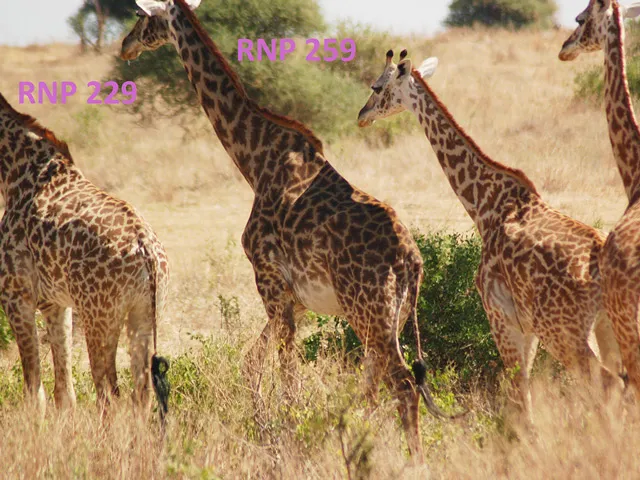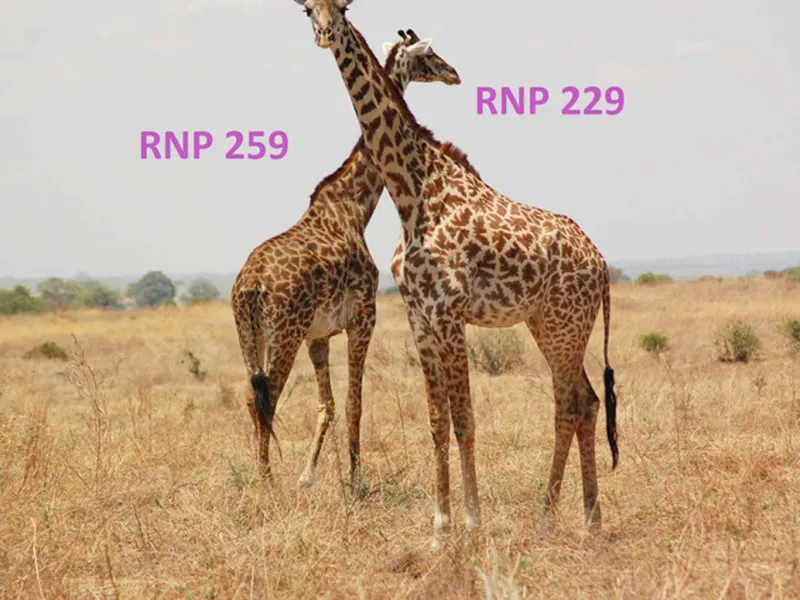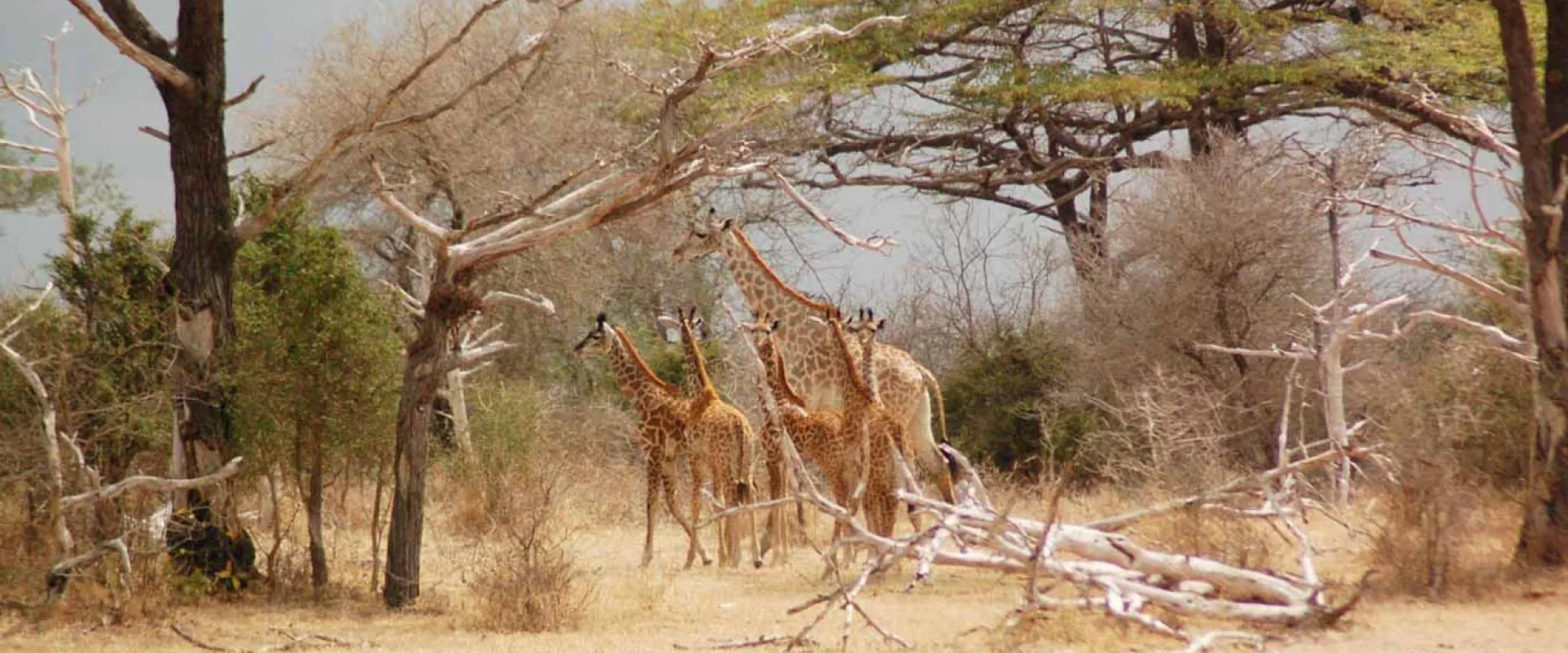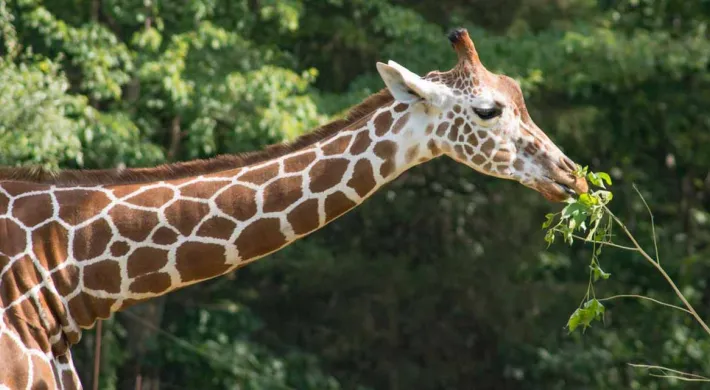Written by Jessica Manzak, Tanzania Giraffe Research Program Coordinator, North Carolina Zoo
Social animals tend to congregate in groups, and giraffes are no exceptions. The kinds of groups that a species prefers can vary; often, they stay as small family groups that remain stable for many years, like zebra, elephants, and lions. Zebra and elephants travel in social groups with related individuals called herds. A zebra herd consists of a single adult male (called a stallion), with three to five adult females (called mares) and their young foals. Foals of both sexes leave the herd when they reach maturity, but the adults in the herd remain with each other for many years. The adult females in the herd are generally not related to each other.
In elephants, herds are either cow/calf herds (adult females with their young) or bull herds consisting of males. Dominant adult males will mix with cowherds when it is time to mate. Usually, the young females stay with the herds, so the herds tend to be mothers, sisters, and aunts.
Giraffes, on the other hand, have what’s called a “fission-fusion” social structure. This means that rather than staying with the same individuals all the time, they vary the individuals they hang out with from day to day. The variations in their social preferences differ considerably depending on several factors. Habitat complexity (the amount of tree or shrub coverage in an area) and disturbance levels (from tourists or predators) both influence giraffe social preferences, but the most significant contributing variable to social preferences seems to be foraging behaviors. Adult females tend to choose social companions with similar dietary requirements and like to eat the same plants.

Co-occurances of giraffe RNP 259
Adult males will congregate in bachelor groups, while the more mature males spend most of their time alone. Adult males will spend time with females when looking for a female ready to mate. However, when there is a male around, the females spend much more time being vigilant- scanning the area around them for disturbances. This means less time available for eating. Younger males are also more vigilant when there are older males around. So, when it’s time to eat, giraffes seem to prefer to spend the most time with other giraffes of the same sex and similar age.
There is a lot of debate about whether giraffes have special friends they socialize with more often than others. We work in Ruaha National Park in Tanzania, where we have seen two adult females together up to three times over the course of our study. The longest time between seeing two friends together so far is a year and a half! These two were seen together in April 2019 and again in December 2020.

Co-occurances of giraffe between social groups
While most giraffe groups vary the individuals, they hang out with pretty frequently, there is one type of group that remains relatively stable for a longer period. Nursery groups - mothers with babies around the same age - may keep the same members for several months. In our Ruaha study, the adult females we have seen together three times were seen together in September, October, and November of 2020 and were probably in one of these nursery groups. Giraffe calves are not all born synchronously like wildebeest and zebras but are often born in time clusters. The mothers with calves born in these clusters may choose to stay together in a nursery group for a longer period. This gives them the advantages of having other adult females around to help keep an eye out for lions, and also means the risk of lions getting their calves are less when there are several similar aged calves nearby. During the day, these mothers often leave all the calves together with one “baby-sitter” in a group called a creche. The other mothers can disperse to find better feeding areas and return to their calves at night when lions are more active. Generally, nursery or creche groups will have 2- 3 calf and mother pairs. The largest reported group of calves was reported in 1979 and had nine calves. Although we haven’t seen quite that many altogether, twice in Ruaha and once in Nyerere, we have recorded groups with seven calves!
Pictured Above: Group with 7 calves in Nyerere National Park
The social structures that animals follow can also have an impact on disease transfer. A study published in 2016 showed that the risk of infection with a type of intestinal parasite was different depending on the social preferences shown by individual giraffes. Intestinal parasites are passed to other individuals through the environment, so you wouldn’t necessarily expect the social interactions to affect their spread. However, it was shown that individual giraffes that tended to hang out with many different individuals over time were more likely to have those parasites than individuals who stayed within the same social group.
This interaction between social organizations and disease spread is particularly important to our work in Ruaha, where we are looking at the effects and spread of Giraffe Skin Disease. Over time as we continue to see the same individuals more times, we can start to get an idea of which individuals vary their social groups the most and compare that with their skin disease status.




